One of the most interesting Champions League clashes on Wednesday night was the one between Manchester United and Atalanta. A game that started more than well for the Italians, who took the 2-0 lead in the first half but went out against a completely different United after the break and gave away their advantage by conceding three goals which led to losing the three points.
Atalanta were more active in the first half, but Manchester United’s increased the tempo after the break, which combined with La Dea’s lack of concentration resulted in the complete turnover.
The Serie A team failed in some of their tactics, which tested their in-game decision-making and had them struggling both in attack and defensively.
Mario Pašalić opened the score for Atalanta, followed by a header by the centre-back Merih Demiral. Moving closer to the second half though, the team lost the initiative and were completely swamped by the energized United later on.
The Red Devils relied on quick offensive transitions, especially in the second half when their opponents lost concentration and it was Juan Musso who saved Atalanta on multiple occasions with his heroic saves.
This tactical analysis examines what went wrong in Gian Piero Gasperini’s tactics and how Ole Gunnar Solskjær got his team back on track to win the game.
Lineups and formations
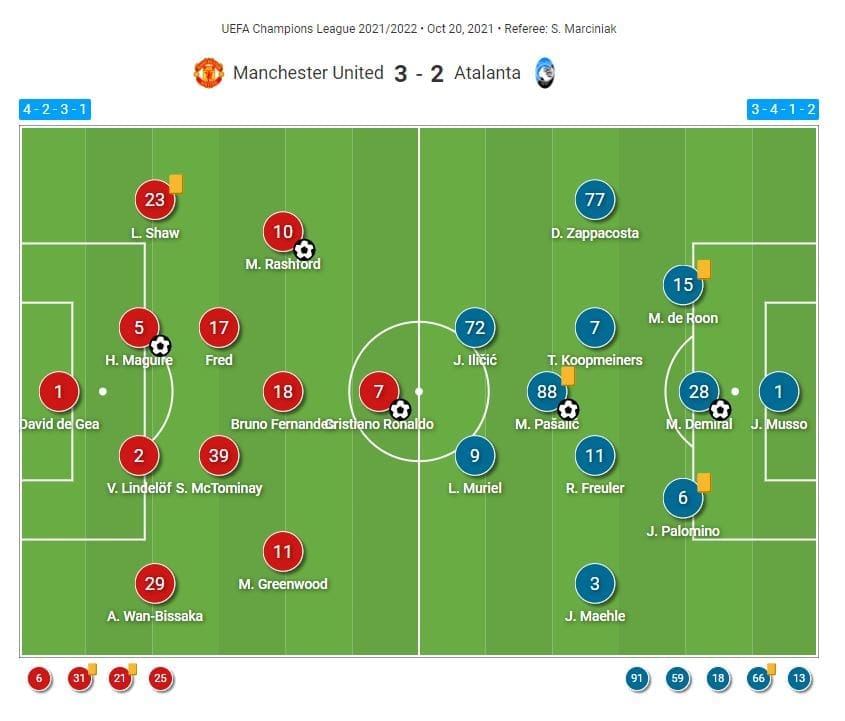
Solskjær opted for a 4-2-3-1 with David de Gea on the goal, supported by Luke Shaw, Harry Maguire, Victor Lindelöf and Aaron Wan-Bissaka in defence. Centrally, Fred and Scott McTominay were responsible for breaking Atalanta’s attacks early on, while Markus Rashford, Bruno Fernandes and Mason Greenwood supported Cristiano Ronaldo in attack.
At first, the team weren’t adventurous and despite how the two conceded goals made them look like, preferred having solid defensive coverage, which later helped them in executing their strategy easier and using quick transitions to create chances.
The manager didn’t make any changes up until the 66th minute when he replaced McTominay with Paul Pogba and Rashford with Edinson Cavani, looking for more explosiveness in attack and trying to expose the opposition with smart passes and through balls. Later on, Jadon Sancho and Nemanja Matić replaced Greenwood and Fred respectively.
Gasperini set the team up in the usual 3-4-1-2 with Musso covering the goal and a back three of José Luis Palomino, Demiral and Marten de Roon. This is where most of the team’s problems came from, with the defenders not having many playing minutes together and obviously the elephant in the room – using De Roon as a centre-back. The manager was forced to do that in the absence of his regular starters in defence Berat Djimsiti and Rafael Tolói who are both injured. This is the main reason for the defence’s inaccurate actions, which United smartly took advantage of.
Joakim Mæhle and the ex-Chelsea player Davide Zappacosta were the wing-backs with Remo Freuler and Teun Koopmeiners moving centrally. Upfront, Gasperini employed Luis Muriel and Josip Iličić, with Mario Pašalić behind them.
This was again, the optimal solution for the team, as one of their best performers Robin Gosens is also absent, which affected their productivity in attack. He made some changes in the second half, due to their lack of creativity upfront but it wasn’t very beneficial for the team. One of the biggest blows for Atalanta was the injury of one of their best performers in the game Demiral, who was forced off and replaced by Matteo Lovato who wasn’t able to fit in. This completely destroyed the execution of La Dea’s defensive strategy.
The Manchester United ventures
First half
United were involved in high pressing which didn’t work out in the beginning and even cost them conceding dangerous chances as the Atalanta players took advantage of these situations and the spaces left behind. La Dea tried to create opportunities through the right side, most frequently making pass combinations between Zappacosta, Koopmeiners and Iličić.
Manchester’s high press intensity dropped after conceding in the 15th minute which meant that they stopped taking risks and dropped deeper trying to prevent similar situations.
They had a defensive impact (which probably was their purpose), they were rather isolated in possession and none of them appears in the top 10 most frequent passing links for United in the game. The team preferred using the sides in their attacking actions, favouring the left side where they used Rashford’s pace to disturb the opposing defence.
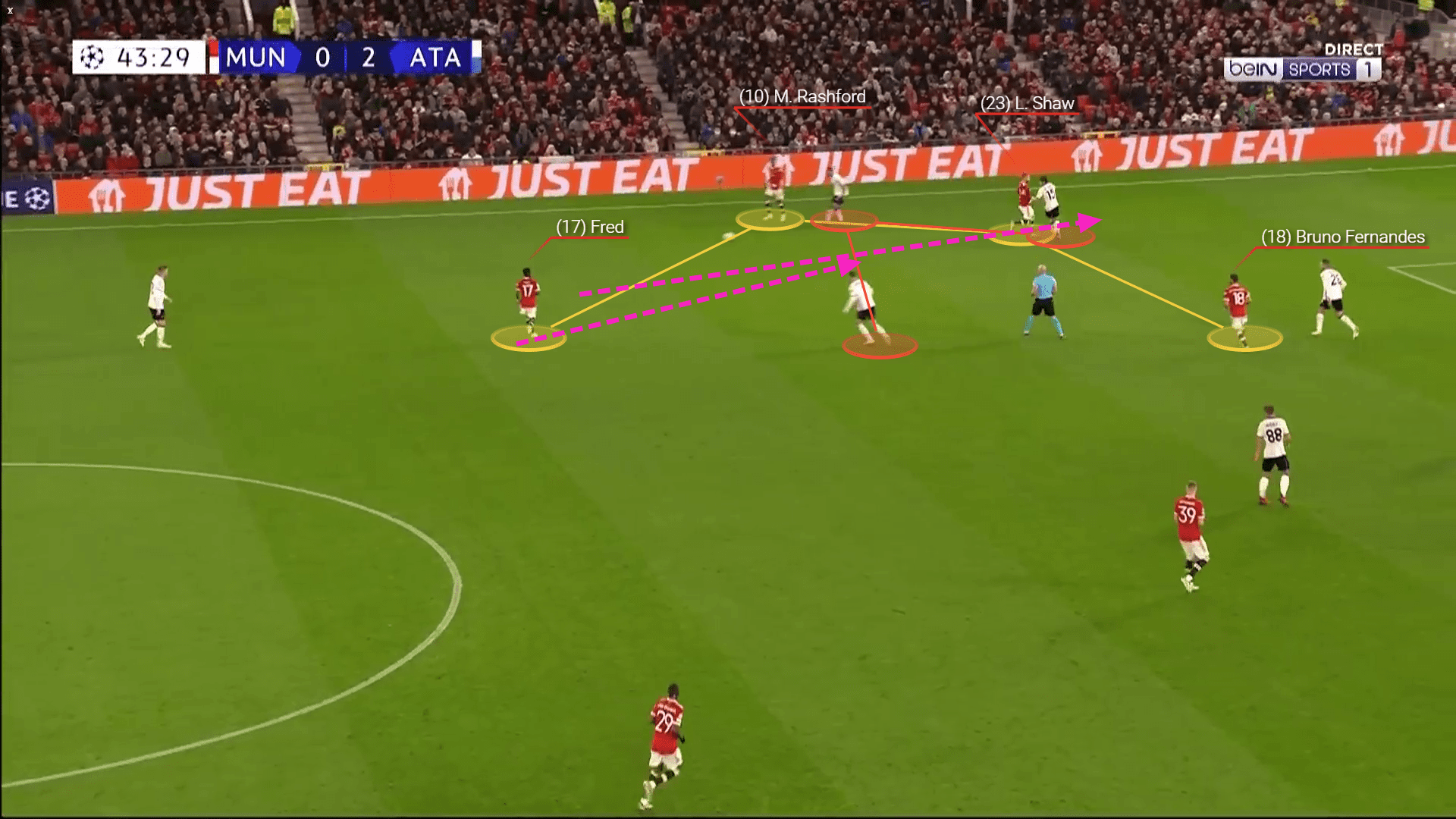
Fred tried to get involved and combined with the attackers more frequently, winning the ball midway and advancing it, but his creativity needed to improve. Despite that, he was beneficial for the team, but got injured and was forced out. Fernandes, on the other hand, was the creative force for the team against Atalanta as he was flourishing during transitions and supported ball progression and the actions in the final third with his passing. He was crucial for progressing the ball after gaining back possession, contributing with four progressive runs and multiple smart passes. His movement was that successful because he contributed to the defensive actions himself and focused on gaining back possession in the advanced areas, with 4/6 of his recoveries being in the opposition’s half.
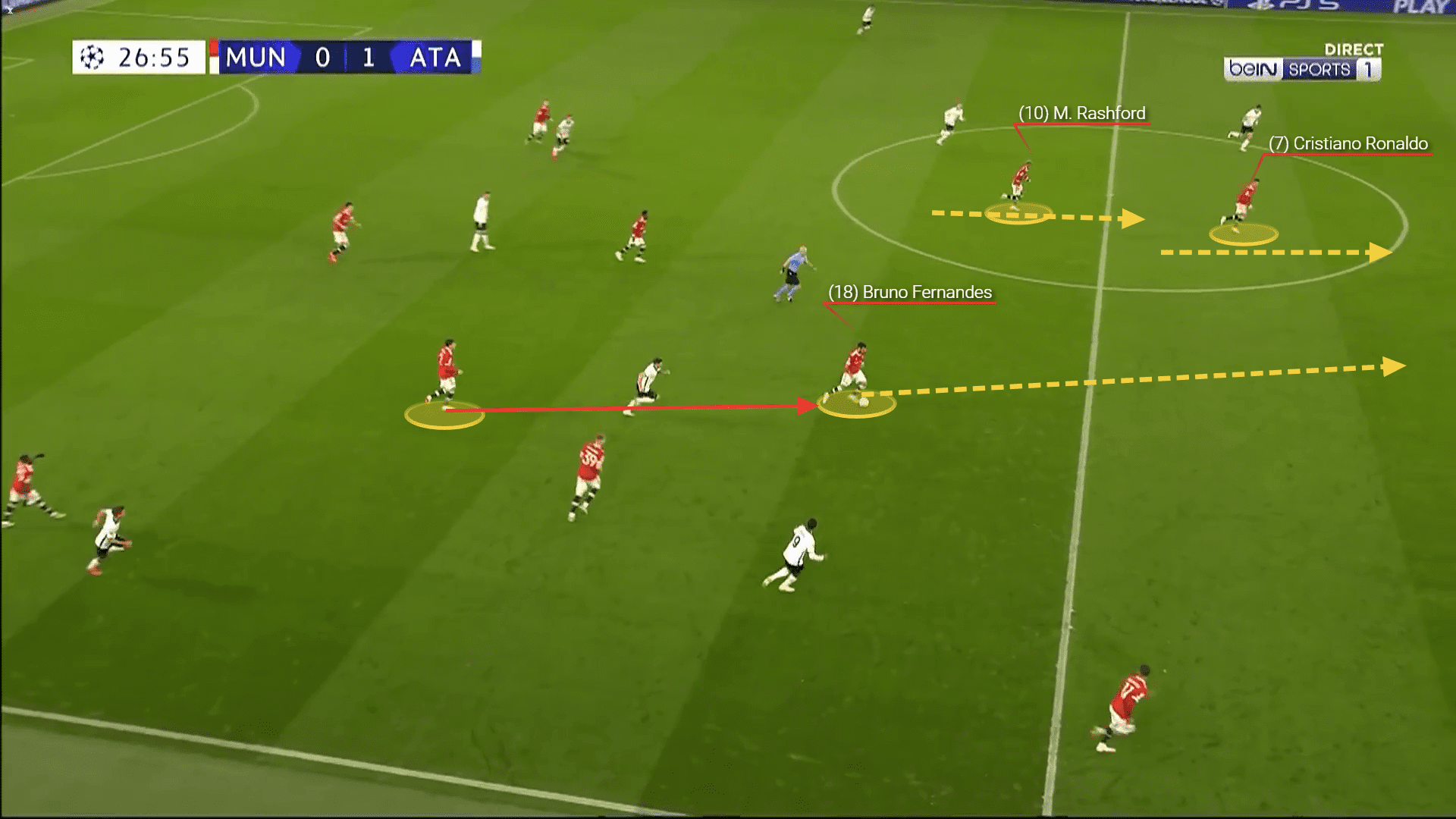
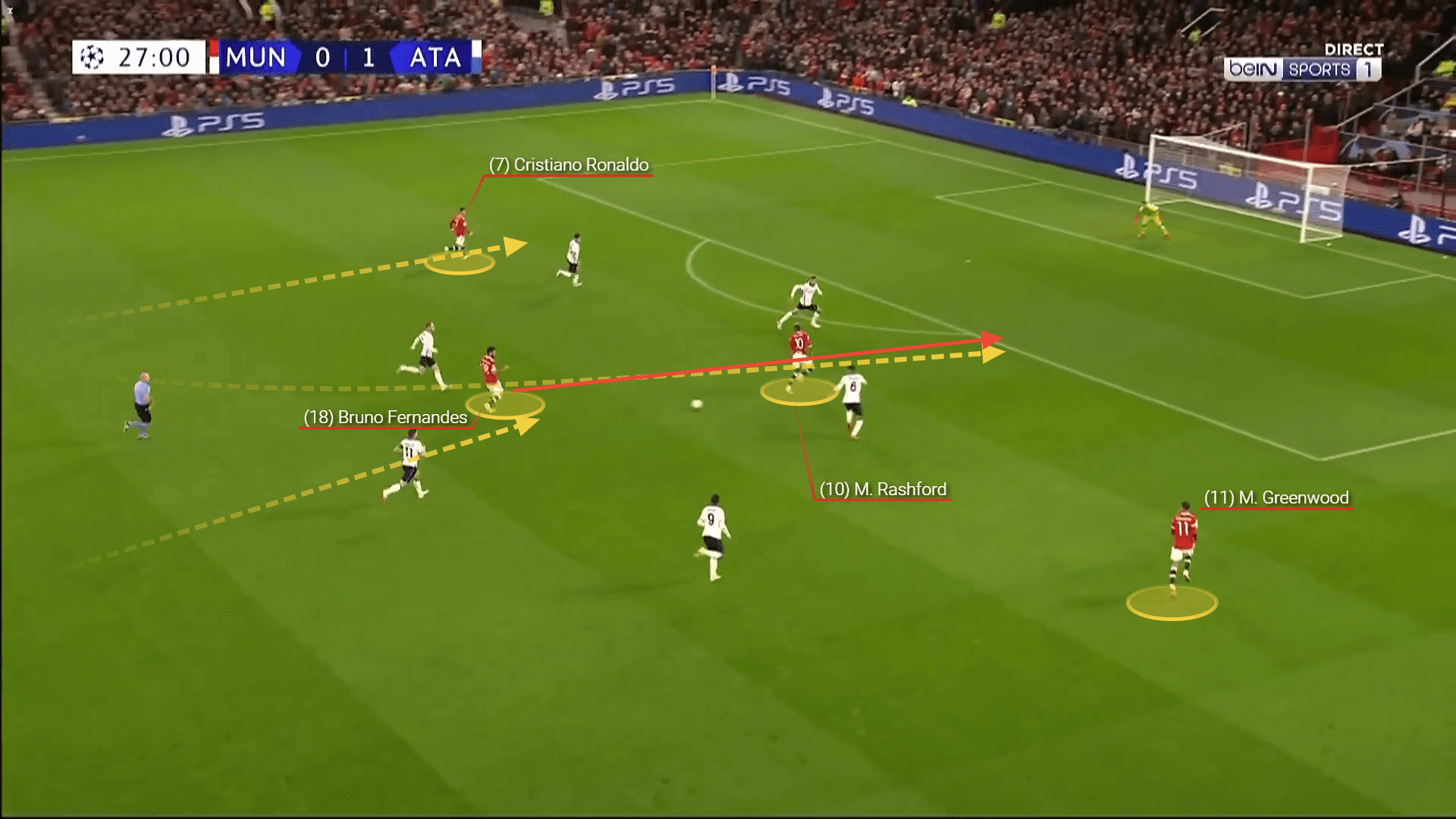
Second half
While Fernandes had a solid display, it was the whole team’s pressing efforts that resulted in getting in control in the second half and scoring. The team increased their press intensity again and looked to win the ball in every possible way, forcing the opposition into mistakes. Atalanta involved many players in defending but their inexperience and lack of concentration led to a few mistakes that led to United shooting.
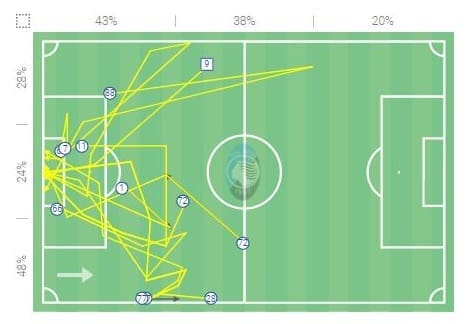
The Red Devils smartly attacked Atalanta’s “weaker” side where Zappacosta was often up high attacking and De Roon was not as comfortable in the right centre-back position.
While United most recovered the ball in their own half before the break, they were stealing the ball in the opposition’s half much more successfully after it.
Pogba’s and Cavani’s introduction immediately boosted the team’s attacking performance. The former Juventus player’s long passes and spatial awareness impacted the team in ball progression, while Cavani engaged defenders and exploited spaces with his off the ball movement. In combination with Fernandes’ passing and ability to hold on to the ball in the advanced areas, they looked way more confident and threatening in attack.
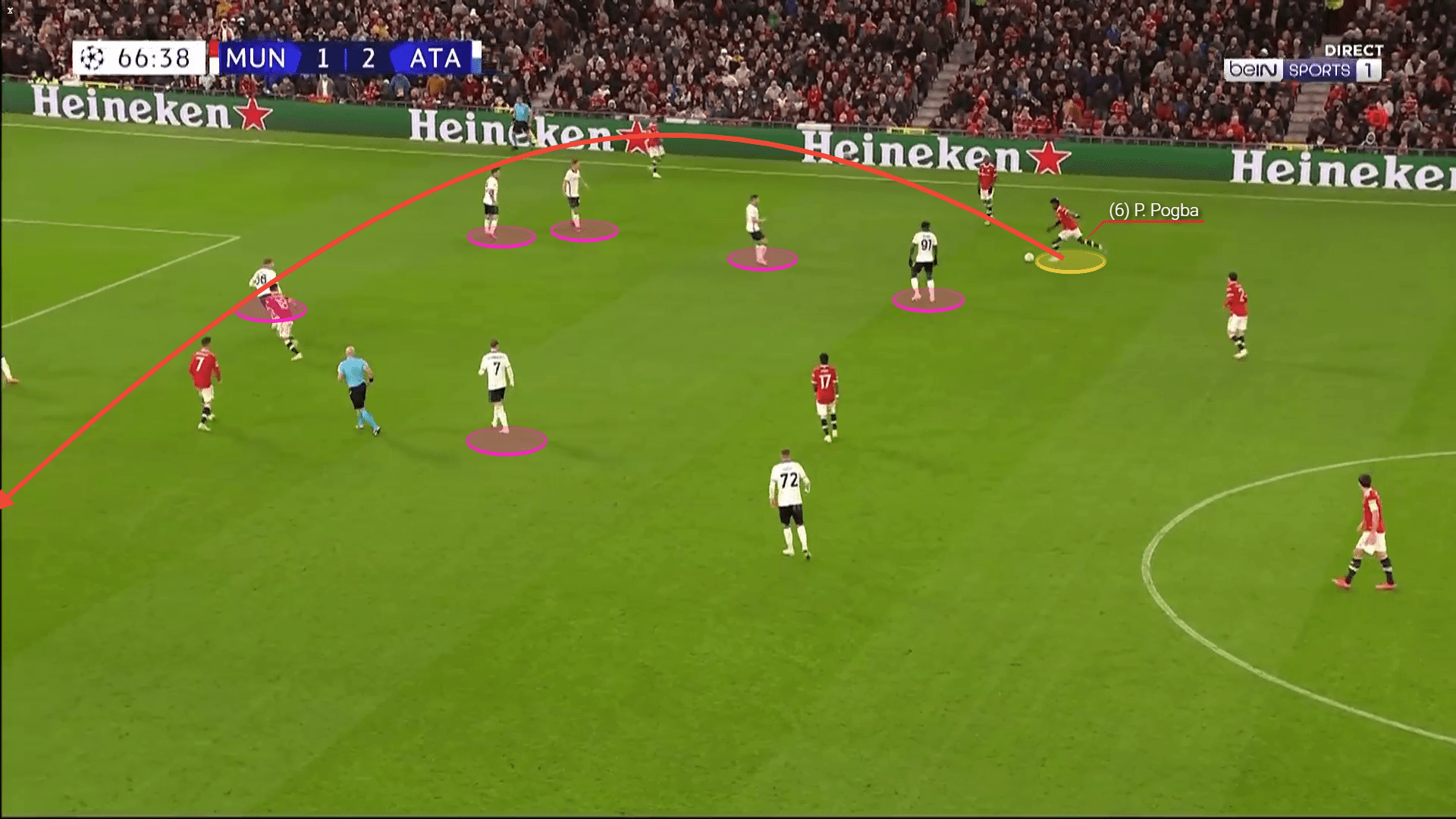
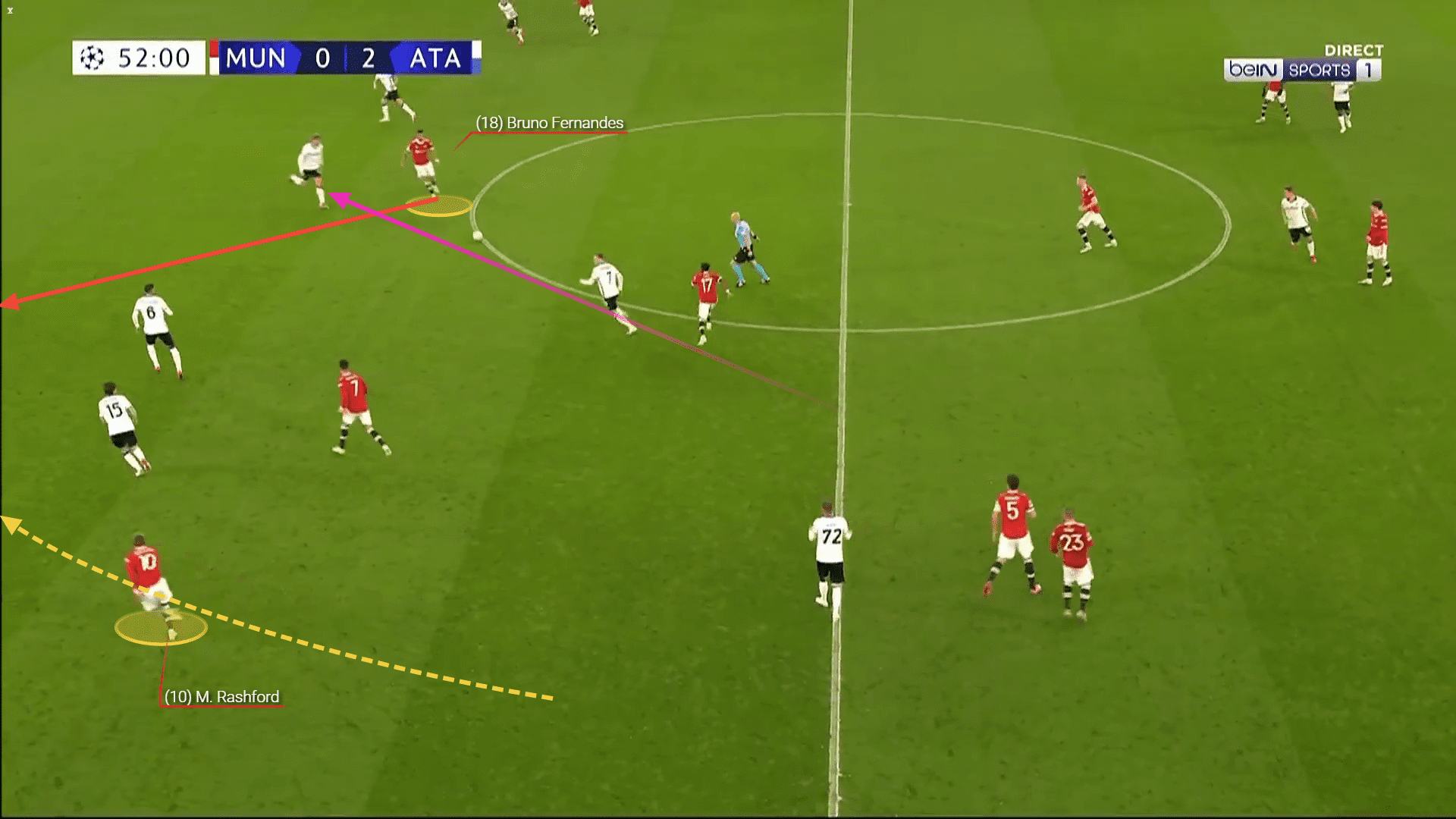
Atalanta’s man-to-man marking wasn’t working, and they would become chaotic should they lose the ball. This allowed United to counteract well and use quick transitions to expose the disorganised defence.
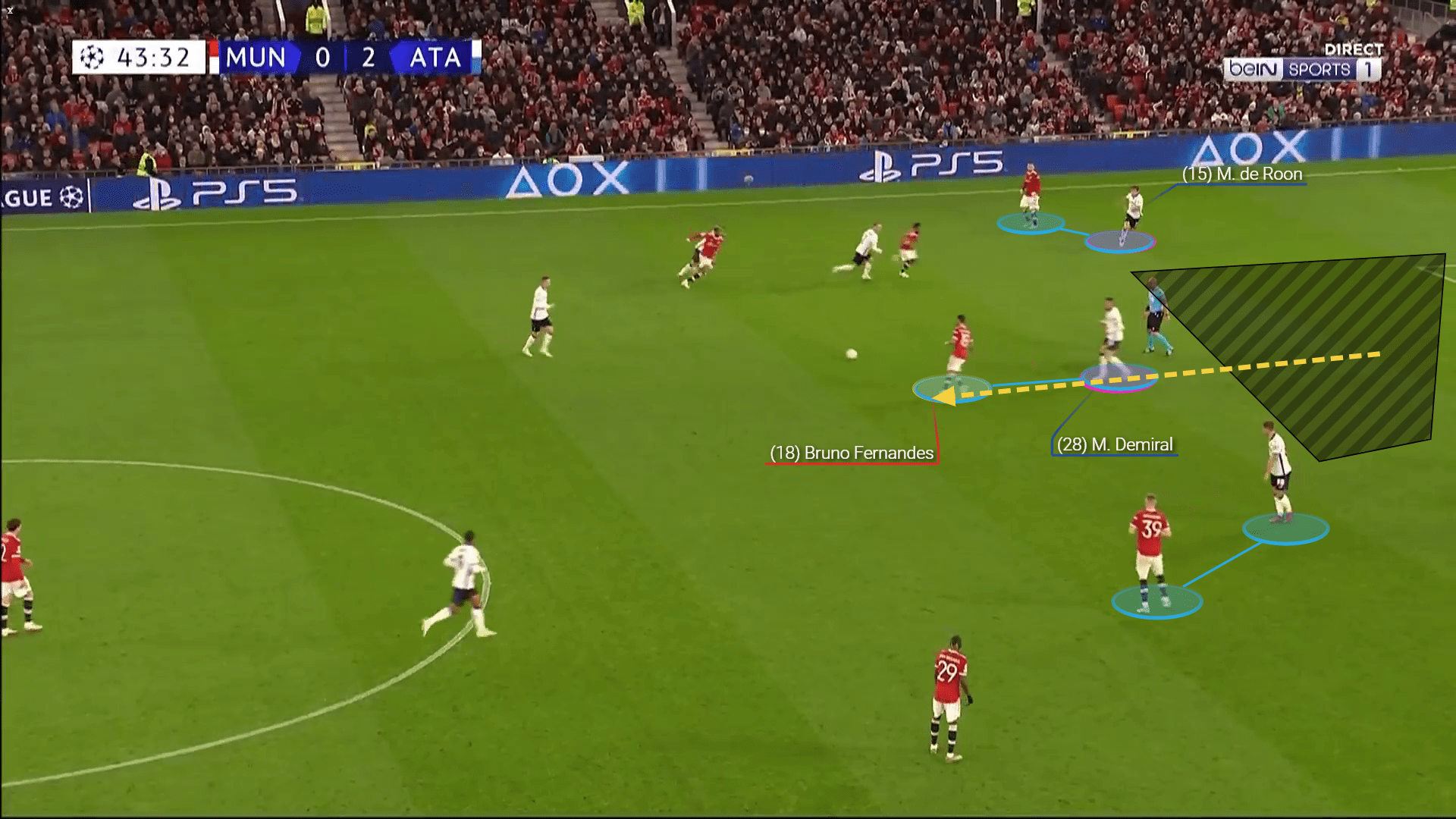
Solskjær’s side were also disciplined at the back and didn’t allow Atalanta many quality chances, keeping them away from the penalty area. Most of La Dea’s efforts on the goal came from outside the box as they were denied space into it. Shooting from distance is among the Italians’ weapons but the lack of concentration and the level of pressure affected their precision.
On the other side of the pitch was Atalanta’s saviour. Despite the three conceded goals, which were more or less a result of his teammates’ mistakes, Musso’s performance was key for the final result. The goalkeeper made six crucial saves throughout the game and denied a few of United’s efforts on the goal.
Conclusion
As our analysis shows, after a mediocre first half, Manchester United made changes and managed to take advantage of Atalanta’s weaknesses in the game. The team went out against a much weaker Atalanta, who missed some of their regular starters in defence, which was pretty noticeable throughout the game. La Dea, though, challenged the Red Devils and fought until the end. To overcome those challenges, Solskjær had to make the right changes in the second half and introducing Pogba and Cavani accomplished that, although leaving the Frenchman out of the starting XI might be considered as an initial mistake that could’ve saved United a lot of struggles. It was noticeable that Atalanta are chaotic and feel uncomfortable in this set-up, which made them an easy target and made them vulnerable to committing individual mistakes.





Comments